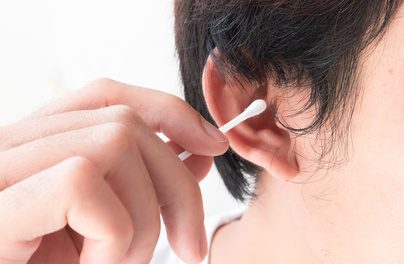Ear Discharge – Causes of Ear Secretions (Blood, Mucus, Fluid)
Blood, fluid and other secretions from the ear are known as otorrhea or commonly referred to as ear discharge. In otorrhea, the discharge exits through the ear and should not be confused with natural ear wax (cerumen) that occurs within the ear canal. Ear discharge should not be ignored, especially if there is constant secretions of blood, discharges stained with blood or clear, thin or sticky fluid that may be cerebrospinal fluid (CSF).
Types of Ear Discharge
There are different types of ear discharge that can often be identified by the color, viscosity (fluid ‘thickness’) and odor. Broadly, ear discharge could be characterized as serous discharge that is clear and thin which may be the tissue fluid, bloody discharge or purulent discharge due to infection, which may vary from yellow to brown.
- Foul smelling discharge from the ear is usually a sign of infection or cholesteatoma. Refer to smelly ear.
- Yellow or brown fluid is also a sign of infection and in persistent infections, the discharge may be stained with blood and is usually thick and sticky. In acute infections, the ear secretion may appear white.
- Bloody discharge, especially of ‘fresh’ blood, indicates a rupture of microvessels of the middle or inner ear or more serious causes of bleeding within the cranial cavity.
- Clear discharge, sometimes referred to as watery ear discharge, may be an indication of tissue swelling or more seriously, cerebrospinal fluid which is the fluid that surrounds the brain in the cranial cavity.

Signs and Symptoms associated with Ear Discharge
Ear discharge may occur without any signs or symptoms, however, most causes of ear secretions will also result in symptoms due to pathology of the affected area.
- Ear pain (otalgia)
- Swollen ear
- Itchy ear or itching ear canal
- Vertigo
- Tinnitus
- Hearing Loss
Video
This video on ear discharge was produced by the Health Hype team.
Causes of Ear Discharge
The most common causes of a ear discharge is due to an infection of the outer or middle ear although otorrhea is also present in severe head trauma.
Acute Otitis Media
Acute otitis media where a perforation of the ear drum (tympanic membrane) is present may result in ear discharge. Severe pain of the ear usually occurs due to swelling and pressure caused by the purulent discharge. The pain usually precedes the discharge and may be accompanied by other symptoms like a sore throat, red eyes (conjunctivitis), fever, diminished hearing and at times, jaw pain.
Children with acute otitis media also present with restlessness, irritability, loss of appetite and may be seen constantly interfering with the ear. Recurrent bouts of acute otitis media should be investigated and appropriate long term treatment and preventative measures should be implemented.
Treatment
- Antibiotics may be necessary for bacterial infections, which is the most common cause of infection in acute otitis media.
- Anti-inflammatory drugs will reduce any pain and swelling and corticosteroids may be necessary in severe cases of swelling which is not resolving with anti-inflammatory drugs.
Chronic Otitis Media
Chronic otitis media may result in a persistent ear discharge and some of the other symptoms of an acute otitis media may not be present. Usually the discharge is yellow to brown and has a foul odor and can affect hearing and balance or may be reported as dizziness. Chronic otitis media is also called ‘glue ear’ due to the thick, sticky discharge.
Treatment
- Antibiotics may be necessary for long standing bacterial infections.
- Corticosteroids may be necessary to reduce swelling and secretions.
- Grommets may be inserted and this may also be necessary in children experiencing recurrent bouts of acute otitis media.
Cholesteatoma
A cholesteatoma is when a keratin mass occurs in the middle ear. It can block the eustachian tube, damage surrounding tissues and increase the risk of chronic otitis media. Retraction (not perforation) of the ear drum allows the discharge to empty through the ear canal. A chronic, offensive smelling ear discharge that is scanty may be a sign of a cholesteatoma. Initially it may be painless pain can set it as the condition progresses.
Treatment
- Surgery is usually necessary.

Severe Head Injury
Head trauma, especially in cases of hard falls, severe assault or motor vehicle accidents, may result in otorrhea. This may be seen as a clear fluid usually due to a CSF leak, or blood stained fluid or in severe cases, profuse bleeding.
Treatment
- Severe head trauma requires immediate medical treatment and should be treated as a medical emergency especially if there is a concurrent discharge of blood or fluid from the nose (nosebleed).
- A CT scan is necessary and the attending physician will decide on the appropriate treatment based on the findings.
Otitis Externa
Otitis externa is an inflammation of the external ear (pinna) and ear canal caused by infection or an allergic response. The most common symptoms include pain, itchy and swollen ear canal. Otitis externa due to infections is also known as swimmer’s ear and is common during the summer ‘swimming’ season.
Treatment
- Antibiotics is required for bacterial infections. A viral or fungal infection causing otitis is less common but appropriate treatment should be implemented if necessary.
- Antihistamines are usually required in otitis externa due to allergies.
- Corticosteroids ear drops may be used to reduce swelling and itching of the ear canal in severe cases, provided that the ear drum is not perforated.
Other less common causes of chronic ear discharge include :
- Cancer of the ear canal or tumour in the middle ear.
- Mastoiditis which is an infection of the mastoid process of the skull which is located behind the external ear. This infection may occur due to otitis media where the infection spreads to the mastoid process. It may be seen as a swelling behind the ear or reported as pain behind the ear.
- Foreign body in the ear usually occurs in children inserting objects in the ear. The object causes swelling of the ear canal and bacterial infections may occur further down the canal leading to foul smelling discharges.
- Necrotizing otitis externa is a complication of otitis externa that is rare. The infection spreads to the bones of the skull and chronic severe pain is usually present. This condition usually occurs in immunocompromised or diabetic patients.
- Wegener’s granulomatosis is a rare condition that affects the blood vessels of the respiratory passages, ears and less commonly, other areas of the body.
References
- Acute Otitis Media. Medscape
- Necrotizing (Malignant) External Otitis. American Academy of Family Physicians
- Ear Tumors. Cleveland Clinic
Last updated on August 19, 2018.




